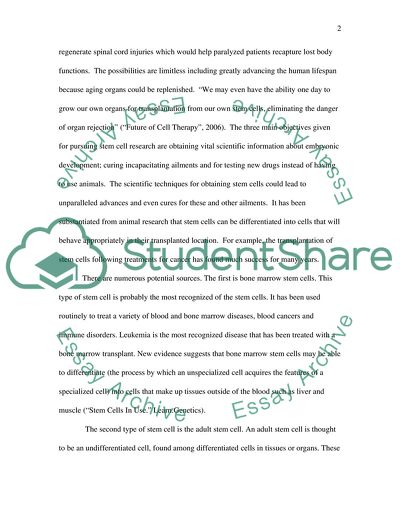Cite this document
(“Stem Cell: A Promising Horizon Research Paper Example | Topics and Well Written Essays - 3250 words - 1”, n.d.)
Stem Cell: A Promising Horizon Research Paper Example | Topics and Well Written Essays - 3250 words - 1. Retrieved from https://studentshare.org/health-sciences-medicine/1576932-persusive-research-paper-on-stem-cell-research-and-why-it-needs-to-continue-and-be-funded-by-congress
Stem Cell: A Promising Horizon Research Paper Example | Topics and Well Written Essays - 3250 words - 1. Retrieved from https://studentshare.org/health-sciences-medicine/1576932-persusive-research-paper-on-stem-cell-research-and-why-it-needs-to-continue-and-be-funded-by-congress
(Stem Cell: A Promising Horizon Research Paper Example | Topics and Well Written Essays - 3250 Words - 1)
Stem Cell: A Promising Horizon Research Paper Example | Topics and Well Written Essays - 3250 Words - 1. https://studentshare.org/health-sciences-medicine/1576932-persusive-research-paper-on-stem-cell-research-and-why-it-needs-to-continue-and-be-funded-by-congress.
Stem Cell: A Promising Horizon Research Paper Example | Topics and Well Written Essays - 3250 Words - 1. https://studentshare.org/health-sciences-medicine/1576932-persusive-research-paper-on-stem-cell-research-and-why-it-needs-to-continue-and-be-funded-by-congress.
“Stem Cell: A Promising Horizon Research Paper Example | Topics and Well Written Essays - 3250 Words - 1”, n.d. https://studentshare.org/health-sciences-medicine/1576932-persusive-research-paper-on-stem-cell-research-and-why-it-needs-to-continue-and-be-funded-by-congress.


